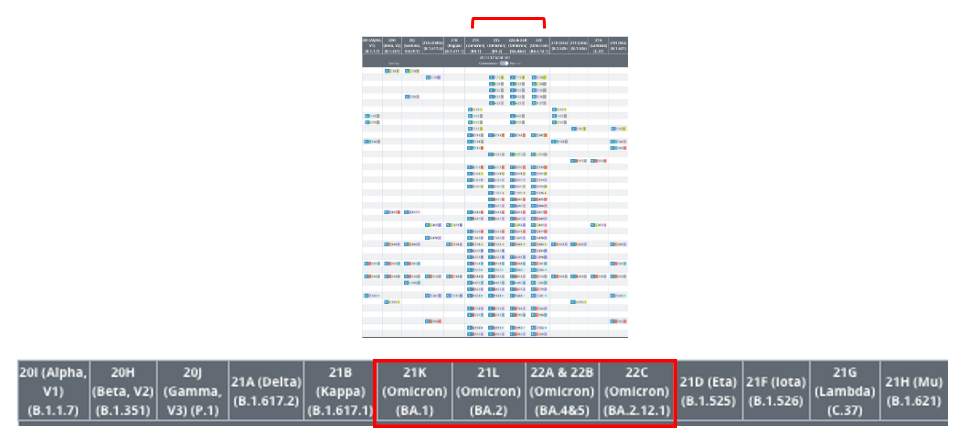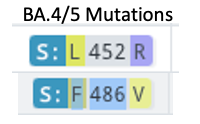Remember the early days of Covid when experts were excitedly talking about herd immunity (HI) and how things would get back to normal when this was reached? How long has it been since the term was used? The answer is five days. This is when Dr. Anthony Fauci, a formerly optimistic proponent of HI, told us that it was now pretty much out of the question. Love him or hate him, there can be little doubt that Fauci has it right this time. Classic herd immunity as we know it is nothing but a pipe dream. The virus has all but assured that.
The only certainty after two-plus years of Covid is uncertainty. Many have complained that the story (and advice) from the CDC keeps changing. Although I am loath to defend the agency (both because of its complicity in the opioid OD crisis and failure to deliver a coherent message during much of the pandemic) I need to cut them a break here.
Early in the pandemic, the CDC did not look good; it flip-flopped regularly, changing its advice both when the science changed but also when it didn't. It is fair to say that whatever damage was done to its reputation was at least partly self-inflicted. Some will argue that "partly" is too generous. Maybe, maybe not. It doesn't really matter now.
What's the best advice that the CDC could give Americans about the current phase of Covid? I haven't the wildest idea. "Follow the science" has become "good luck guessing what's next." The fault lies squarely on the spikes of SARS-CoV-2. The virus has behaved like something from a Michael Crichton book.
I hate masks
But I sure wore them on two different occasions: 1) before my second vaccination and 2) a year later when the previously unimaginable Omicron variant blazed through the world, infecting people who were and were not vaccinated, as well as those who had and had not caught Covid before. Now I find myself staring at a box of N95s wondering what to do. I just don't know. And in a previous life, I spent 10 years doing antiviral research in the pharmaceutical industry and now write about Covid professionally. And I still don't know.
What's the average person supposed to do? If the message on masks was disjointed two years ago, it is utterly incoherent now. Airlines just announced, to great celebration, that mask requirements would be dropped, but yesterday the CDC announced that masks should still be worn while flying. Should we wear them for half the flight?
The answer is that none of us know and this is reflected in the conflicting information we are now bombarded with. Signs in libraries, dry cleaners and supermarkets have banal messages such as "please consider wearing masks to help protect our employees." Most medical care facilities still require them. The message from public transit authorities in New York is predictably bewildering:
Masks are still required at indoor train stations and on board subways, commuter rail, buses, and paratransit vehicles. You do not have to wear a mask at outdoor train stations and platforms, or at bus stops.
(Note from a hardened New Yorker: I rode the subways in the 70s when the experience was pretty much the same as a Road Warrior movie. Now, I will not. And it's not just Covid. We are going through a charming time when pushing people in front of trains has become almost fashionable.)
Is it time to mask up again? Definitely maybe. Too soon to tell.
We know both more and less about Covid than we did in 2020
Our progress in understanding and combating Covid, especially in such a short time, has been nothing short of miraculous. We now have vaccines, antiviral drugs, antibody treatments, (moderately accurate) rapid home tests, and accurate lab PCR tests.
But we absolutely got clobbered by Delta, then by Omicron. Although it didn't make you as sick as Delta did, Omicron doesn't seem willing to go away anytime soon. Quite the opposite really. I urge you not to skip over what appears upon first glance to be a horror show (below). It's really pretty simple.

Horror Show Figure 1. Top: Spike mutations found in variants of concern. Each colored box represents a single mutation (see Figure 2 for explanation). Note the stark difference in numbers of mutations in the four Omicron columns (red bracket above, red box below). It is not a coincidence that Omicron, by far the most contagious variant(s) so far, is also the most mutated and by a lot. Underneath I have enlarged the header, which allows you to see the variants you've heard about in the past. Source (for this and all sequencing information): Covariants
What do all these symbols in these boxes mean?

Figure 2: (Top) How to read a mutation chart. Shortcuts for mutations at different locations on the 1273 amino acid protein molecule that makes up the spike protein. The "S" in the blue box means that the mutation is found in the spike protein. The "G" (gray, top) means that glycine, which was originally found at position 339 (the 339th amino acid of 1273) in the Wuhan strain, has been replaced by aspartic acid ("D," orange). Likewise, "S371L" means that serine 371 has been replaced by leucine. (Bottom) A linear representation of a protein. It begins with amino acid #1 and continues until the end (terminus). That number can be in the 10,000s. The numbering system is identical to that of the mutation charts.
Omicron is Scary
Figure 1 is screaming at us that Omicron is a different beast. Despite having to undergo numerous mutations – far more than in any other variant of concern – it nonetheless emerged and took over the world, causing almost all infections at the time, and also the most infections of any of the variants. Why scary? In 18 months or so, we've gone through one wave after another, each more contagious than its predecessor. Since "original" Omicron (now called BA.1) mutated into subvariants like BA.2, it goes without saying that BA.2 would be expected to be more infectious than BA.1. It is by 1.5 times. So it is not surprising that BA.2 now makes up about 90% of the Covid cases in the US, a pattern we've seen consistently since Delta first hit.
But it's BA.4 and BA.5 (very similar) that concern me the most. A pre-print, non-peer reviewed study published in medRxiv suggests that the people who caught "original" Omicron (BA.1) can expect little protection against BA.4/5. If these findings hold up we can throw dirt on the idea that herd immunity will occur. Think about it. People who caught Omicron are not even protected from another version of Omicron, maybe even during an active infection. This is more than a little disturbing. Fortunately, there is no evidence that these new subvariants cause more severe disease than BA.1. But I wouldn't even begin to guess whether this is right.
At least it makes sense
A few amino acids go a long way. Remember that even a single mutation in the spike can have a profound effect on the properties of the variant. In the case of BA.4/5, there are two mutations of particular interest: arginine (R) replacing lysine at position 452 and valine (V) replacing phenylalanine at position 486.

Key mutations in the receptor binding sites of SARS-CoV-2.
What is special about these two? Unlike mutations in earlier variants positions 452 and 486 are part of the SARS-CoV-2 receptor binding domain, in other words; the area where the virus attaches itself to ACE2 host receptors. It should be noted that none of the previous variants of concern contains both these mutations and that the F486V mutation is unique to BA.4/5. This isn't great news because it is known that mutations at positions 452 and 486 can increase the affinity of the spike toward the receptors. If BA.4/5 ends up competing with B2.A (or whatever version of it going around at the time) it is possible that people who have just recovered from a bout of Omicron can catch it again shortly thereafter—or worse, while they are still infected with the older variant.
The observed escape of BA.4 and BA.5 from BA.1 elicited immunity is more moderate than of BA.1 against previous immunity. However, the low absolute neutralization levels for BA.4 and BA.5, particularly in the unvaccinated group, are unlikely to protect well against symptomatic infection.This may indicate that, based on neutralization escape, BA.4 and BA.5 have potential to result in a new infection wave.
Siegal, et. al, doi: https://doi.org/10.1101/2022.04.29.22274477
This is not the end of the world. Or Covid either
If the science holds up and BA.4/5 are really able to scoot around immunity from prior infection, this does not mean that we're necessarily looking at another deadly wave. The new variants may not be more infectious than those that preceded them, although history suggests that they should be. Indeed, infections caused by these variants are now soaring in South Africa.
The fact that we're seeing variants that now have an improved binding domain is not comforting. If they can break through acquired immunity from a very similar pathogen, does this mean that they will also diminish vaccine protection or whether we'll need regular shots of different single (maybe multiple) variants?
Fortunately, we finally have tools to fight the virus; they're not perfect but they work well. And other types of vaccines, for example, nasal sprays that could block infection are in the works. Finally, the fact that we're not seeing serious disease, like that caused by Delta, is also encouraging.
What does all this mean? Ask me again in a month and I'll probably give you a different answer.
NOTES:
(1) Although the vaccines don't seem especially effective in preventing Omicron infection, they still do a fine job of preventing serious disease and death.
(2) BA.2 was nicknamed "Stealth Omicron" for its ability to "trick" PCR tests so that it was difficult to distinguish it from the older Delta variant.




